The drilled rows of holes in a tree are the work of the Red-naped Sapsucker, a western woodpecker. I start with an old picture of the sapsucker and the drilled holes. Yet, it isn’t frequently that one sees one in any guise. So, I welcomed an invitation from a friend to visit a nest cavity that he discovered on his property. The sapsuckers are now busily feeding their chicks in the nest, but these chicks have yet to grow big enough to peek out of the cavity. Maybe that will soon come.
This first picture was taken 14 years ago. It shows a Red-naped Sapsucker that has carved rows of holes in the bark of a tree to then sip the nectar and eat the attracted bugs (June 9, 2010). I have seen it a few times since, but not the carving of holes.
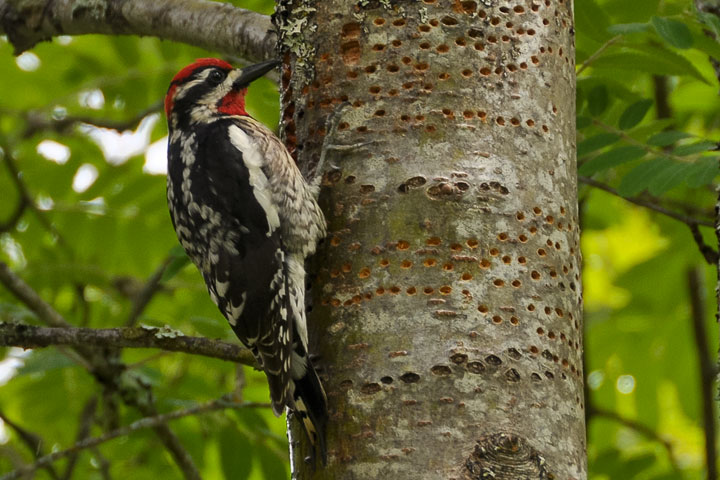
Now, return to the present. It is the practice of many birds after fetching some food, to not fly directly to the nest, but to stop at a nearby tree and look for predators. On finding none, they then fly to their nest.
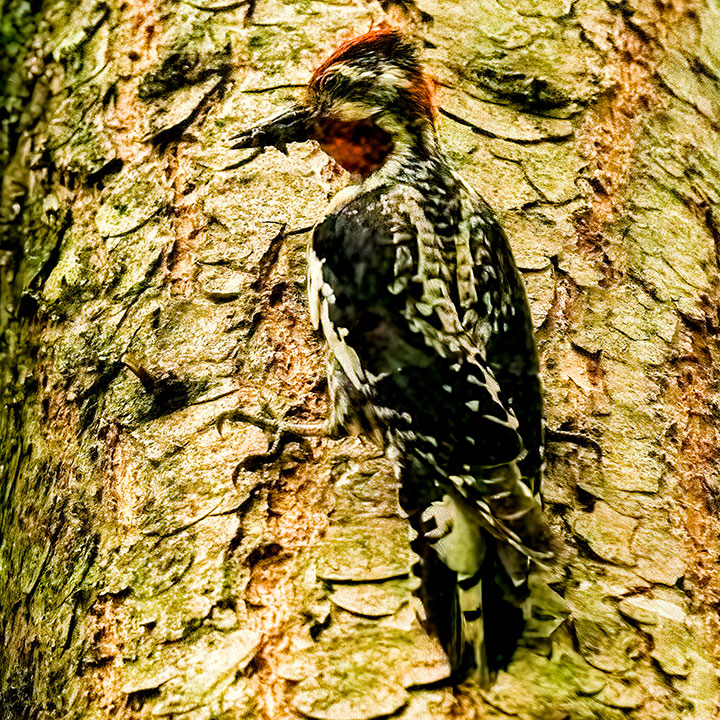
The male then moves to the cavity nest with a beak full of soft-bodied insects. 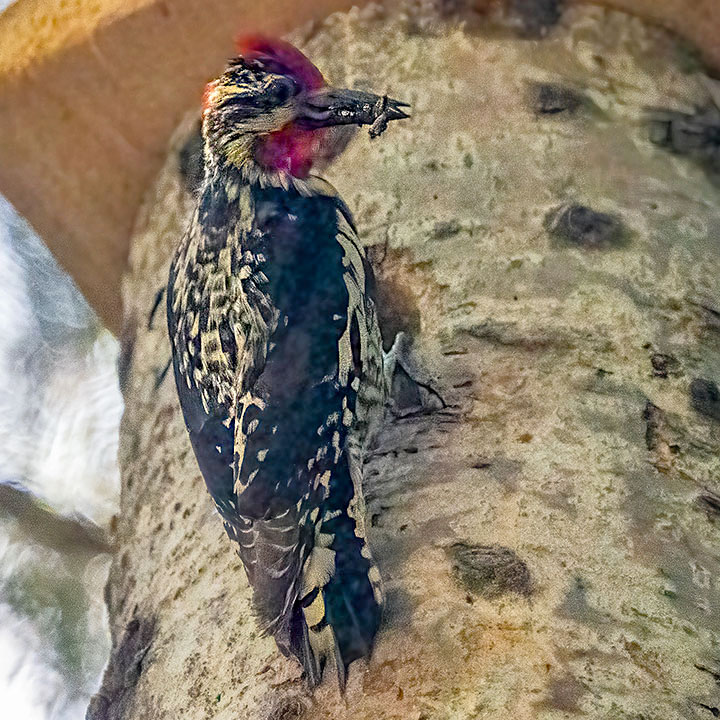
Both male and female sapsuckers tend the nest. The male is leaving, the female arriving.
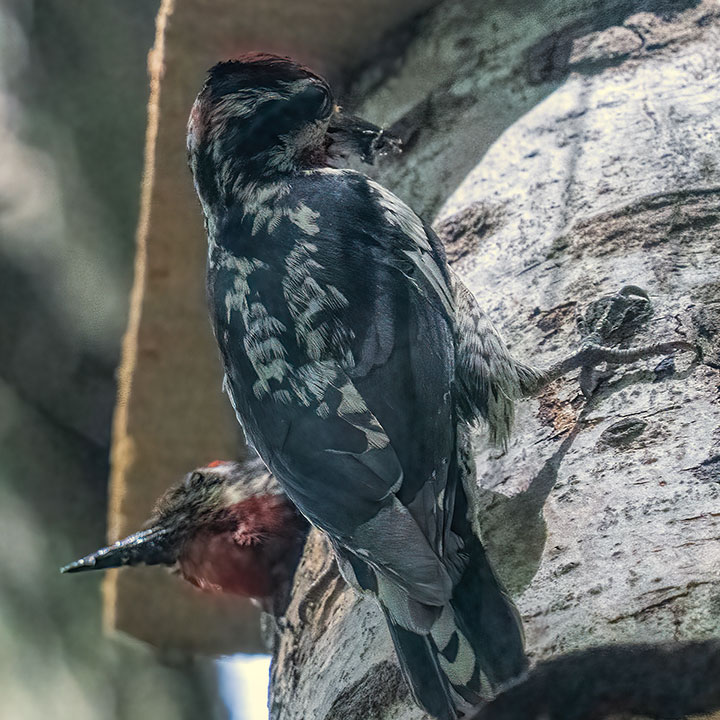
The male flies off to get more food for the chicks. It is a constant task.
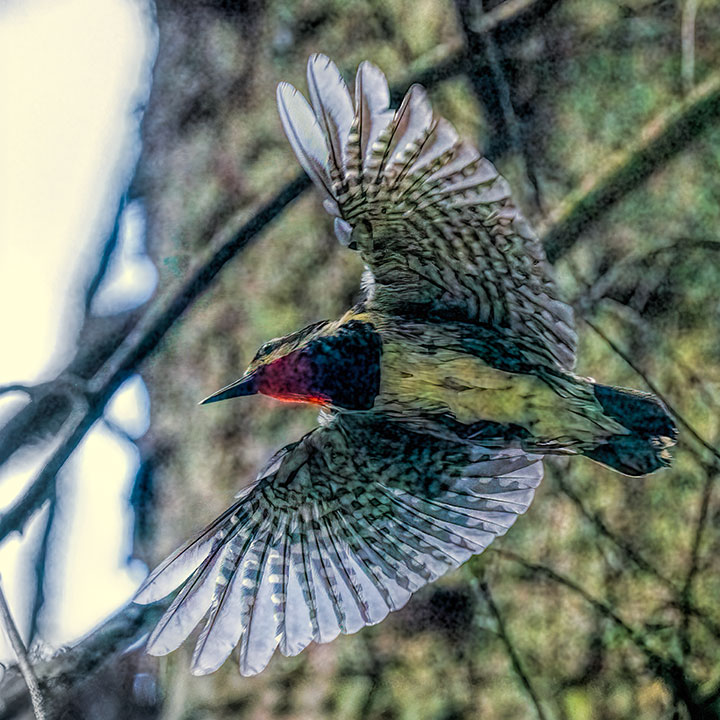

Thanks so much for the great pics and info…welcome, as usual!
Very Nice. Thank you.
So, sap suckers don’t actually suck, eat, sap? The process is actually making insect “traps”? Clever. And, how or why do the insects end up in the sap? I’ve seen robins return to the nest “area” with food and a, “nothing interesting here” attitude, check for predators, then go to the nest.
Slightly off subject, but still about birds. Once in the Yukon, we were fishing for Grayling from a bridge. Swallows had built lots of nests in the bridge works. Their dropping fell into waiting mouthes of the fish.
I have a red-naped sapsucker visit one of our mountain ash trees regularly. I have been doing some yard work nearby and he seems to completely ignore my presence, sometimes getting quite close. Pretty sociable. I’ll have to see if I can figure out where they go after visiting our tree.